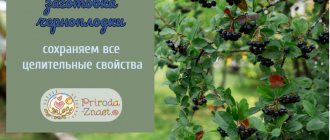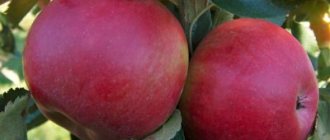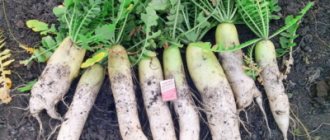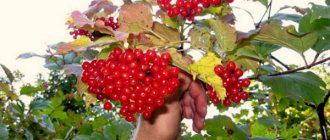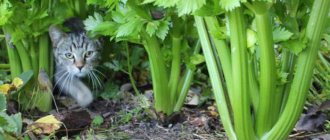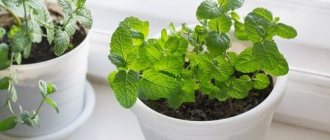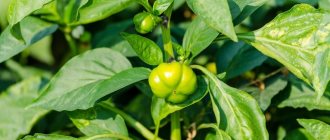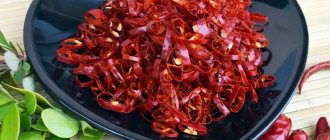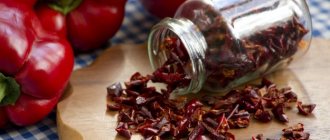In gardens and cottages, growing peppers is just as popular as growing tomatoes. Basically, these are sweet (bell) peppers, but spicy lovers often plant bitter ones. The harvesting of the two varieties is different. Therefore, it is worth understanding all the nuances.
Different degrees of ripeness of legume vegetables
Different varieties have different ripening periods. Some are early, others are later. But both of them have two types of ripeness: technical and biological. Technical ripeness occurs 50-60 days from the moment the seedlings are planted (depending on the variety). The fruits are large in appearance, juicy and plump, but the color is not yet intense and has not reached the color indicated on the package. That is, mostly green or slightly yellow.
These vegetables can (and should) be picked for further consumption, storage or processing. But biological ripeness occurs approximately a month after technical ripeness. Such fruits are brightly colored, have a persistent characteristic aroma, and are filled with the maximum amount of vitamins and other useful substances. They are picked for processing or consumption. But such fruits do not last long. They are used first.
When and how to harvest sweet peppers
As soon as the first large fruits appear on the stem, they can already be picked and consumed. This moment comes from the beginning of August. Mass collection occurs in August and September. Important nuances when picking pepper:
- The fruits are harvested at technical ripeness with constant regularity.
- Carefully trim the peppers with scissors, along with the stalk, and do not pick them with your hands. The fragile stem of the plant can be easily damaged, so it should be supported.
- Harvest after 5-7 days, as new fruits grow. The harvesting principle is similar to that of cucumbers.
- Leaving large peppers on the bush for biological ripening, new fruits will not be able to develop en masse, and the overall yield will decrease.
- When frost occurs, you need to remove all peppers from the garden. Since this plant does not tolerate sub-zero temperatures.
- You can pick all the fruits from the plant, sort them by stage of ripeness and store them in cool rooms.
Bitter is not always nasty. Hot pepper harvest
Lovers of bitterness and a fiery feeling in the mouth often deal with bitter pepper, growing it in their plots. This vegetable has the same stages of ripeness as the sweet representative of the species.
It should be remembered that by picking off the pods when they are technically ripe, you can get medium-hot fruits. This way the necessary bitterness is regulated: by picking off small green peppers, we get a slightly spicy vegetable. And red, ripe, long peppers are the hottest and most bitter. It is in biological ripeness that bitter peppers need to be stored, unlike their sweet relatives.
Thus, when growing peppers in open ground in the country, you need to regularly collect fruits at the technical stage of ripening in order to obtain maximum harvest volumes.
Pepper has been deservedly loved by chefs all over the world for several centuries. Its sweet and spicy varieties are good fresh and canned, adding an original taste and unusual aroma to vegetable and meat dishes.
Thanks to the successes of breeders in recent decades, this heat-loving guest from South America has become a popular vegetable crop not only in the southern regions of our country, but also in areas of risky farming. Very early and early ripening varieties are successfully planted by enthusiastic gardeners even in Siberia.
Growing a rich harvest of peppers is only half the battle. It is important to collect juicy, vitamin-rich fruits correctly and, most importantly, on time.
Harvesting in a greenhouse
If the timing of harvesting from open ridges is limited by the first frost, then in a greenhouse this period can be extended until the onset of stable cold weather. Early frosts are not dangerous for greenhouse peppers, but at low temperatures, plant development stops and ripening practically stops.
When harvesting peppers, you should remember some features of harvesting sweet and bitter varieties. Bell pepper requires compliance with several important conditions:
- To increase the yield of the bush, remove the fruits immediately when they reach technical ripeness. Clean your peppers at least once a week.
- Remember that pods harvested at the stage of biological ripeness contain the maximum amount of useful substances. However, they are better suited for immediate consumption or canning, and have a much shorter shelf life than peppers picked unripe.
- The transition from technical ripeness to biological ripeness takes from several days to two or three weeks. The duration of this period depends on the climatic conditions of the environment, mainly on the air temperature: the warmer the weather, the faster the ripening occurs.
- The finished fruits should be separated from the plant very carefully, preferably using scissors or pruners, and always together with the stalk.
Festive video recipe
:
Bitter varieties should be collected only at the stage of biological ripeness, that is, fully ripe. It is then that the pods acquire the necessary sharpness, color and piquant aroma characteristic of the variety.
When is the best time to shoot?
The varietal characteristics of pepper determine its ripening period. Bitter and sweet bell peppers differ not only in appearance and taste, but also in the nuances of harvesting. If you remove the pepper at the wrong time, it may not have the best taste.
Hot pepper
Hot peppers can only be picked when they are fully ripe. If you remove it earlier, the fruit will not be spicy enough, since it acquires this taste quality only on the bush. The riper the pepper, the hotter it is.
How to store sweet peppers?
To successfully store the bell pepper harvest, several important conditions must be met.
- Carefully sort the pods, removing all diseased and damaged specimens.
- Store fruits collected at the stage of technical ripeness in a cool room. At temperatures not higher than + 10 °C, the crop will reach biological ripeness in about a month. If you want to speed up the ripening time, place the pods in a warmer place.
- Ripe peppers are best stored at temperatures from 0 to +1 °C and air humidity of about 90%. It is under these conditions that the crop will remain fresh for two months.
- Small wooden or plastic boxes are usually chosen for storage. It is recommended to line the inside with paper or wrap it around each fruit individually.
- You can not cut the pods, but leave the harvest directly on the bushes, removed from the ground along with the roots and hung upside down in storage.
- Please note that red and orange varieties store better and longer than varieties with green fruit coloring.
What to do with peppers after harvesting
In order to enjoy the sweet taste of the crispy pulp of pepper for as long as possible, you need to take care of its proper storage.
Basic rules for storing bell peppers:
- Immediately after harvesting, it is necessary to sort the fruits according to size and degree of ripeness.
- Carefully inspect the sorted peppers - there should be no stains, signs of rot, dents, cracks or any other damage on their surface. After selection, the fruits can be sent for storage.
- The storage temperature of sweet pepper depends on the degree of its ripeness - from +1 to +3°C for ripe fruits and from +11 to +13°C for unripe vegetables.
- For long-term storage of bell peppers, you can use thick plastic bags or wooden boxes. The fruits need to be sprinkled with sawdust to prevent rotting. In such conditions, vegetables can be stored for up to 8-10 weeks.
- For long-term storage of sweet peppers, instead of sawdust, you can use newspaper or sheets of paper in which you need to wrap each vegetable and then place it in a wooden or plastic box.
- If sweet peppers will be used for harvesting seed material, the collected fruits must be rinsed, completely dried and the seeds removed from them. Place them in a plastic bag or paper roll and store for 36 months.
When removed from the bush at the stage of technical maturity and properly stored, sweet peppers can easily be stored for up to 8-10 weeks. The vegetable is not only perfectly stored without loss of taste and commercial qualities, but also gradually ripens. If the harvested crop is stored in a warm and well-lit place, fruit ripeness occurs much faster than in a dark and cool cellar or basement.
Bell pepper is one of the most popular and sought-after vegetable crops. To obtain a generous harvest of tasty and crispy fruits, you need not only to know the agricultural technology of cultivation, but also the rules of harvesting.
The timing of harvesting pepper depends on many factors - growing conditions and characteristics, variety, variety and ripening time, weather and degree of technical maturity. For fresh consumption, preparation of various dishes and winter preparations, it is best to pick bell peppers at the stage of biological maturity, for long-term storage or transportation - at the stage of technical maturation.
How to store hot peppers?
The presence of burning substances makes the acute varieties practically invulnerable to pathogenic fungi and bacteria. That is why such peppers almost do not spoil during storage, but simply gradually wither.
- They are usually stored dried in whole pods, which are placed in boxes or crates, and sometimes they are simply hung on the walls in bundles.
- You can grind the dried harvest into a powder and store it in a paper bag or glass jar.
- The original way to store fresh peppers is in vegetable oil. The pods, placed in a glass or ceramic container, are completely filled with refined oil, which over time acquires a unique aroma and can be used in cooking.
- For storing hot crops, a cool place away from sunlight is best suited.
The relationship between soil and air humidity
Under the influence of the climatic conditions of their homeland, pepper plants have developed a very high requirement for soil and air moisture. This can be explained by the relatively limited spread of the root system and the high need for water for transpiration and crop formation.
Water consumption varies significantly depending on the age of the plants. In the first period of their life (before the onset of fruit formation), no more than 8-10% of total water consumption is required. Subsequently, water consumption increases significantly.
When growing pepper on clay soils, it is advisable to maintain soil moisture at a level of 90% of the HL (lowest moisture capacity) before fruiting and 80% during the remaining periods of plant life. On loamy and sandy loam soils, irrigation should be carried out when the humidity is reduced to 70% HB in a layer of 0-30 cm (during the period of fruit formation and fruiting in a layer of 0-50 cm).
Watering is carried out regularly. Optimal soil and air humidity enhances fruit formation, increases the commercial quality of fruits, and reduces the incidence of plant diseases.
The critical period for moisture is long, from the beginning of the appearance of the first buds to the setting of fruits (1.5-2 months). Seedlings grown with a lack of moisture are stunted, weak, with a small number of leaves, and do not take root well. Yields are low, the fruits are small, deformed, and susceptible to blossom end rot.
Pepper plants react negatively to both drying out and waterlogging of the soil. In the first case, they suffer from an excessive increase in the concentration of salts in the soil solution. When waterlogging occurs, the activity of growth processes decreases due to a lack of oxygen in the soil. Waterlogging of the soil has a particularly adverse effect on young plants (the first 3-4 weeks after germination). Under such conditions, organic acids and alcohols accumulate in the roots, which leads to a deterioration in the supply of nitrogen and the synthesis of amino acids.
Difficulties in the absorption of water and mineral nutrition elements also arise when cold water (below 15°C) is used for irrigation in hot weather, when the air and soil temperature is more than 30°C. Often in such conditions there is severe wilting of plants.
Pepper is very demanding on air humidity. Insufficient water vapor content in the air, especially in hot weather, causes excessive suppression of plants and even the falling of flowers and young ovaries. A relative air humidity of at least 70% is considered favorable for pepper.
When to Harvest Peppers
Gardeners mainly grow sweet peppers on their plots. The season for collecting early varieties can open in early August. Mass harvesting of vegetables occurs at the end of August - September. But you can pick and eat the fruits when they reach their varietal size.
Collection time
There is no single harvest date for peppers. There are nuances on which the degree of fruit ripening depends.
Factors influencing harvest time:
- variety - early, late;
- variety of culture - bitter or sweet pepper;
- region of growth;
- weather.
Harvesting can be done according to biological and technical ripeness. Biological maturity is determined by the achievement of color, size and shape according to the characteristics of the variety. Technical - when the size corresponds to the variety, but the color and taste are insufficient.
Reference. Typically, the pepper harvest coincides with the harvest of tomatoes and eggplants.
The variety plays an important role in the ripening and further storage of the vegetable. Early peppers reach biological maturity 70-80 days after planting, late-ripening varieties - after 130 days or more.
Exact calculation
Each variety has its own period of technical ripeness. You can harvest early peppers 60-70 days after the growing season, mid-season peppers - after 90 days, late varieties - after 4 months. Between technical and biological ripeness 20-30 days pass, depending on the weather. The higher the air temperature, the faster ripening occurs.
Experienced gardeners harvest crops during the period of technical and biological ripeness. In this phase, fruits contain the greatest amount of sugars, vitamins and mineral salts. These peppers are suitable for fresh consumption and canning, but they are stored worse than unripe ones.
The first harvest can be obtained in early August. The latter is removed before the onset of the first frost. During the entire season, 3-5 fruit harvests are carried out
Collection according to the lunar calendar
Many gardeners work on their plots according to the lunar calendar. The full moon is the best time to collect fruits that ripen above the ground. It is believed that these days the juices of the plant move to the top, filling the fruits with juiciness and taste.
Pepper harvest time
A crop grown in a greenhouse is harvested upon reaching biological or technical maturity. Depends on what variety we are talking about. The main thing is to harvest before frost sets in.
Biologically ripe bell peppers are stored less than technically. Such ripeness occurs approximately two months after the first shoots (the exact timing is determined by the variety and indicated on the package with seeds), biological - 20–30 days after technical ripeness (depending on the ambient air temperature: the higher it is, the faster ripening occurs) .
Cleaning nuances
Environmental conditions play an important role in fruit ripening. Vegetables growing in open beds and in greenhouses have different harvest times.
In the greenhouse
Frosts are not harmful to fruits grown in a greenhouse. In closed beds, vegetable growers often set harvest dates themselves. The season may end with the onset of a consistently cold period. However, it is worth considering that a decrease in temperature indicators affects the plant, inhibiting its development and fruit ripening.
In the open ground
In open garden beds, weather conditions play an important role in the ripeness of vegetables. The plants are heat-loving and do not tolerate frost, so the fruits should be harvested before the first cold snap.
Important! Delaying the first harvest can lead to stunted plant growth, which will slow down the development of new fruits.
The benefits of hot pepper
In Mexico and Chile, Thailand and India, not a single main dish is complete without hot pepper. Residents of these countries, located in different parts of the world, are united in one thing - this product is healing. And they are not wrong.
Hot pepper helps digest heavy foods, cleanses the intestines of pathogenic bacteria, and strengthens the immune system. It prevents the occurrence of thrombosis, has a wonderful hematopoietic and diuretic effect, and has a beneficial effect on potency, hair and nail health.
Everyone knows about the pungency of this vegetable, but not everyone knows about its beneficial properties. The pods get their pungent taste from the alkaloid capsaicin they contain. In addition to giving dishes a spicy kick, capsaicin is also known outside the kitchen - for example, it promotes hair growth and the development of healthy hair follicles.
For colds, this vegetable will be even healthier than lemon, since it contains twice as much vitamin C. In addition, it is rich in vitamins A and B, and also contains sugar, oils and carotene. However, all these substances are stored in fruits only in raw form.
Advice. If the storage recipe calls for cutting the pods, they are divided in half and the seeds are removed from them.
This vegetable is also a good antidepressant as it helps relieve stress. This occurs due to the stimulation of the production of endorphins in the body, which can also lead to the relief of pain of various types. Eating hot pepper pods improves blood circulation and is a good means of preventing atherosclerosis and the formation of blood clots, increases appetite and improves digestion.
This is interesting! The common belief that this product can cause stomach ulcers or gastritis is wrong. Recently, scientists from Seoul Yonsei University discovered that this product, on the contrary, destroys pathogenic bacteria that cause ulcers.
This vegetable also helps in the fight against insomnia and can also prevent cancer. Japanese scientists have proven the beneficial effects of the product on the body in the treatment of asthma and some allergic reactions. In this case, capsaicin is used in various pharmaceutical products.
In folk healing, this product is used to treat joints and back. The spicy vegetable has proven itself well in dietetics, as it improves metabolic processes in the stomach, which promotes fat burning and weight loss. 100 g of hot fruits contain only 40 kcal.
How to determine the degree of maturity
The ripeness of a bell pepper can be determined by the characteristic crackling sound of the fruit when touched. Depending on the variety, ripened fruits turn yellow, red, brown or purple.
Hot peppers can be removed as soon as the formation of the pods is completed. These fruits are suitable for fresh consumption. For canning and long-term storage, only those peppers that have reached biological maturity are used.
Signs of ripe hot pepper:
- bright color;
- the lower leaves of the plant turn yellow and dry out;
- the appearance of a burning sensation when rubbing the pod on the back of the hand.
How to speed up fruit ripening?
In regions with short summers and early winters, it is not always possible to grow peppers until they are fully ripe, so there is a need to accelerate the growth of the crop. You need to start with the correct planting. The beginning of the development of a crop affects its further formation and fruiting.
Sowing seeds
Sowing seeds for seedlings should begin in late February or early March. Before planting, the planting material is disinfected in a 1% solution of potassium permanganate. To do this, the seeds are left in the solution for half an hour, then washed.
After this, the seeds are soaked in a solution with wood ash or in a growth stimulator for a day. Then they are washed and left on a plate, covered with a damp cloth for germination. The ambient temperature should be +20. +25°С. Sprouted seeds are placed in containers with moistened soil to a depth of no more than 1 cm. The containers are covered with film and placed in a warm place.
Seedling care
After the seedlings emerge, the containers with seedlings are exposed to light and the film is gradually removed. Watering should be regular. After 2 weeks, the seedlings can be fed with complex liquid fertilizers.
Rules for the greenhouse
When planting seedlings in a greenhouse, the following conditions and care must be provided:
- Soil temperature. The rule about early planting for early harvest does not work with pepper - you need to plant the crop in well-warmed soil, about +18°C.
- Warm. The air temperature in the greenhouse should be maintained at +18°C during the daytime and not lower than +14°C at night. There should be no sudden changes.
- Illumination. The bushes need good light for 12–14 hours. The tallest plants should be placed in the center of the bed; short ones will do well at the edge of the bed.
- The soil. The culture loves light and fertile soil. Apply organic fertilizer before planting. Add dolomite flour to the soil to reduce acidity. Loosen the soil before planting.
- Landing scheme. As the plant grows, it becomes large and spreading, so it can block the light for neighboring plants, and in addition there will not be enough nutrients in the soil for its growth and maturation. Therefore, for tall plants, the distance between rows is 70 cm, between bushes - 40 cm. For short plants, 30–35 cm between plants is enough, and the same between rows remains the same.
- Watering. The vegetable needs to be watered rarely, but abundantly. Excessive and frequent watering can lead to bacterial and fungal diseases.
- Fertilizers. Do not forget about fertilizing, but the main thing is not to overdo it with nitrogen: it should not be added abundantly during the flowering and fruiting period.
Pruning and shaping the bush
Bell pepper only needs two or three shoots to develop, so the rest are removed.
Also, to speed up the bulk of the harvest, you need to do the following:
- during early ripening, remove the crown bud;
- during active flowering, remove barren flowers;
- at the end of summer, remove all flowers;
- during fruit growth, get rid of all shoots;
- Before the start of the cold period, pick small fruits that will not be able to reach full maturity before the onset of cold weather.
Harvesting peppers is a simple process. The main thing is to take care of this in a timely manner, correctly determine the timing of harvesting, and also study the rules and technology for harvesting vegetables. And then you will be able to enjoy a generous harvest and keep it fresh for a long time.
Rules for harvesting and its further storage
When harvesting peppers, care must be taken as mistakes will lead to loss of harvest.
Instructions for harvesting peppers:
- When technically ripe, the fruits are selectively harvested every 6-8 days.
- Remove the peppers using scissors or pruners.
- For better storage, the fruit is cut off along with the stalk.
- When harvesting, you should be careful not to damage the branches of the bush.
- Peppers should be sorted according to size and ripeness.
To enjoy fresh vegetables for as long as possible, you need to properly organize their storage. Peppers can be stored for a month longer than tomatoes and eggplants.
Important ! If stored poorly, the fruits begin to rot after just 2 days.
Characteristics of fruits for storage:
- technical maturity has been achieved;
- no mechanical damage;
- there are no signs of damage, cracks or dents.
Storage conditions
Thin-walled peppers should be stored in the refrigerator. Before sending it for freezing, part of the stalk should be cut off from the fruit, leaving its small tip.
For storage in basements and cellars, containers are used - boxes and plastic bags. Gardeners prefer bags because they do not allow air to pass through, which means vegetables are stored better. To extend the freshness period, each fruit can be wrapped in a layer of paper.
Requirements for plastic packaging: thickness - at least 120 microns, presence of a membrane with perforation on the side wall.
The temperature in the storage area for vegetables that have reached technical ripeness should not exceed 8-10°C with a humidity level of 80-90%. Under these conditions, the pepper will ripen in a month. To speed up ripening, it is moved to a warmer place.
Ripe fruits are stored at a temperature of 1°C. Their ripeness will be reached in 2 months. Green varieties last longer than yellow or red fruits.
Important ! Pepper should not be stored together with other vegetables, as it easily absorbs foreign odors.
Some vegetable growers prefer not to pick peppers from the bush. The plant is removed from the ground and hung upside down. Bushes can be stored in a shed or basement.
How to care for peppers during flowering and fruiting
Pepper ranks third in popularity in garden greenhouses and hotbeds of Russian gardeners. With proper care, it produces excellent harvests of colorful, healthy fruits, from which a wide variety of and very tasty homemade canned food is prepared for the winter.
We have already talked about the origin of pepper, how to grow its seedlings and plant them in a greenhouse or greenhouse, as well as further plant care in the article: “How to grow pepper.”
Today we will talk about the most important period in the development of this heat-loving crop - the beginning of flowering and the beginning of fruiting. We will tell you in detail how to care for peppers during this time.
There are certain subtleties here, ignorance of which can lead to partial or complete loss of the harvest.
